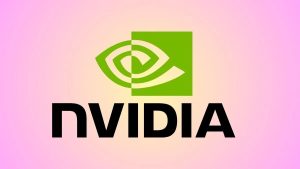Introduction to Technical SEO
Technical SEO is at the core of any digital marketing strategy. It will make sure that search engines efficiently crawl, index, and rank your website in search results. Yes, content and keywords usually take all the attention; without a solid technical base, though, you are always going to have a hard time. This guide is for beginners who want to get their heads around key technical SEO factors and how they contribute to driving traffic toward a website.
Why Technical SEO Matters
First, let’s look at why technical SEO is important:

Better Crawlability: Google sends bots that crawl the sites to see what’s inside your site. Technical SEO makes sure these bots can move around your pages easily, grasp what you have written, and index your site accordingly.
Better Indexation: A well-optimized website makes it easier for search engines to work through your pages efficiently and achieve better rankings.
Better Visibility: Resolving technical issues will improve the chances of getting a website listed in search results and, therefore, attract more organic traffic.
Technical SEO
The Key Factors
Site Speed Optimization

Importance: Site speed is one of the major ranking factors. Fast loading not only improves user experience but also tells search engines that your site is optimized.
Optimizations: compressing images, leveraging browser caching, and minifying JavaScript and CSS files. Some of the tools that can be used include Google Page Speed Insights, which helps in pointing out improvements to be made.
Mobile Friendliness
Importance: With most internet users accessing the websites from mobile devices, having a mobile-friendly site is not optional. Google also uses mobile-first indexing; this simply means that it primarily uses the mobile version of your site while ranking.
Optimization Tips: responsive design should be applied. Fast mobile loading and ease of navigation are a must. Tools like Google’s Mobile-Friendly Test can even test the mobile-friendliness of your site.
XML Sitemap
Importance: The XML sitemap is a type of file that provides the lists of your website pages. This helps the search engines understand the layout of the website and that all the important pages have been crawled and indexed.
Optimization Tips: Keep the sitemap updated and resubmit it in Google Search Console. All key pages should be present except for the ones including ‘noindex’ tags.
Robots.txt File
Importance: The Robots.txt file tells search engine bots which of the pages they are allowed or not allowed to crawl. This file is incredibly crucial to set up if you would like to stop search engines from getting to any personal sensitive information or irrelevant pages.
Optimization Tips: Use it to disallow crawlers to pages that are irrelevant, such as administration or login pages. Test your file using Google Search Console for proper configuration.
Structured Data Markup
Importance: Structured data makes search engines more readable about the content that is present on your site, improving indexation, and eventually enriching results like snippets to improve click-through rates.
Optimisation Tips: Add the schema.org vocabulary to your markup. You can test your implementation using tools like Google’s Structured Data Testing Tool.
HTTPS Security
Importance: HTTPS is the secure variant of HTTP—it protects the connection between your website and its users. Google treats HTTPS as a ranking signal and also displays it in its search results.
Optimization Tips: One of the optimization tips would be getting an SSL and making sure all of your website’s pages are transferred using HTTPS.
Once in a while, check that there is no mixed content, like some resources still served over HTTP.
Canonical Tags
Importance Canonical tags prevent problems associated with duplicate content by telling search engines which version of a page is original or preferred.
Optimization Tips: If you have very similar content on different URLs, referring to the main version of the page, use canonical tags. That means you will put these canonical tags site-wide in order to avoid any kind of penalty for duplicate content.
URL Structure
Importance: Clean and descriptive URL structures are helpful to both users and search engines in grasping the topic of the page.
Optimization Tips: URLs should be short; they should contain the target keywords. It should use hyphens to separate the words. Special characters, numbers, or other irrelevant parameters should be avoided.
Breadcrumb Navigation
Importance: Breadcrumb navigation is a type of navigation that helps the user by letting them inform their exact position in your website structure. This presents a fine user experience and also helps search engines understand your website structure.
Optimization Tips: A “breadcrumb navigation” should be embedded on all pages, and these should represent the real structure of your website. This can be used by search engines in using structured data markup for breadcrumbs to clearly comprehend.
Internal Linking
Importance: This will spread the page authority across your website and enable the search engines to easily crawl through all your website pages.
Optimization Tips: Implement an internal linking strategy in adherence to the logic of the linking of pages that are relevant. Anchor text needs to be informative with the help of target keywords.
Common Issues in Technical SEO and Their Solution:
404 Error
Issue: At the point when the page is not found and there is a 404 error, then it creates a terrible user experience and an enormous spill of slithering spending plan.
Solution: Find 404 errors on your website; there are plenty of tools to do this. One of them is Google Search Console. Redirect these broken links to relevant pages with 301 redirects.
Content Duplication
Problem: Confuses search engines and lessens the ranking potential of your website.
Solution: Try not to have very similar content on more than one page, and from time to time check your site for exact duplicates.
Broken Links
Problem: Broken links will lead to frustrated users; search engines won’t crawl very well either.
Solution: Screaming Frog can be used to identify broken links. Update them immediately. Regularly update your internal and external links for your site.
Slow Server Response Time
Problem: Slow server response times considerably drag down your site’s overall load speed, hurting a decent user experience and even SEO.
Solution: Ensure that you select a reliable web host, configure Content Delivery Network, and optimize your server configuration to ensure the smallest possible response time.
Alt Text Not Set for Images
Problem: Alt text enriches accessibility and lets search engines know what the image is about.
Solution Make sure all the images on your website have descriptive alt text. Seamlessly fit the keywords into alt text to improve the image SEO.
Technical SEO Tools
Google Search Console
This is a cost-free tool to monitor your site performance, fix issues, and get an idea about how Google indexes your site.
Screaming Frog SEO Spider
Crawls the website and highlights broken links, duplicate content, and many other different problems on your site.
Google pagespeed insights
The tool checks how fast your website loads and gives tips on how to further optimize it.
Ahrefs Site Audit
A full-featured tool that provides in-depth technical SEO analysis of a website, commenting on its issues and suggesting how to fix them.
GTmetrix
Understand how fast your web is and ways through which it can be faster.
Conclusion
Technical SEO is among the essential elements that formulate an all-round SEO. Getting hold of and applying these critical factors will enhance crawlability, indexation, and drive better search engine performance. First of all, full understanding and implementation of these—things like site speed, mobile friendliness, proper usage of tags, among other basics—would go a long way in driving traffic and improving the presence of your website. Learn from the above, and with time, keep learning and refining how to be at the top in this ever-changing world of SEO.




